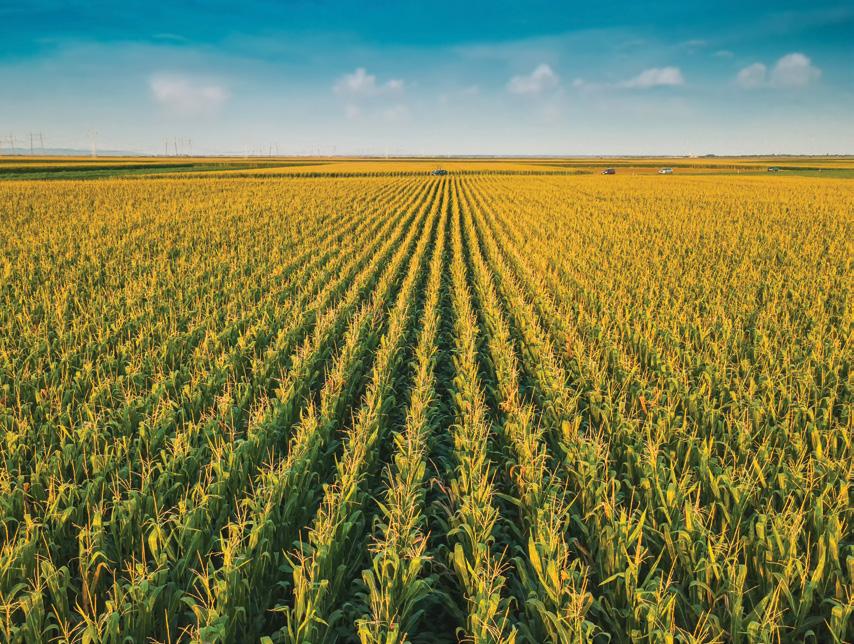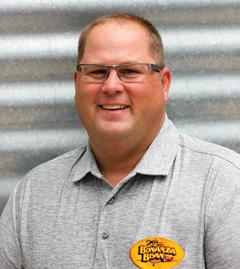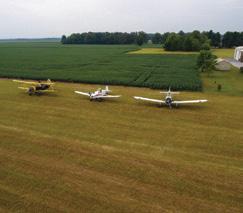
4 minute read
Technology in the growing field
Innovations in automation help farmers work more efficiently
Story by LAZ DENES
Never has technology been more important to the agriculture industry than it is today. As farmers and ranchers face challenges such as diminishing sustainable farmland, rising costs of supplies and equipment, workforce shortages, and ever-changing consumer preferences, they must find ways to produce more without breaking the bank.
Fortunately, technology enables farmers to shave hours, days and even weeks off some of the most time-consuming tasks to make their operations more efficient than ever.
Corey Poss, an agronomist with the Rutherford Farmers Cooperative in Murfreesboro, Tennessee, oversees an operation that offers satellite and drone technology to help map, monitor and analyze crop fields. Another solution is a forecasting tool that can predict the yield of a particular crop to within 10% — before seeds are even planted.

“Crop ground is getting swallowed up every day, and we’ve got more people to feed, so we have to apply technology everywhere we can to be as efficient as possible and not waste time and money,” says Poss, who is in his sixth year with the Rutherford co-op after graduating with an agribusiness degree from Tennessee Tech University.
“A lot of our larger growers are participating with us free of charge,” he says. “The technology originated in the Midwest — the Corn Belt. I don’t ever have to step in the field. We can get a much more accurate look from above. We can identify problems with water, nutrient deficiency and disease on a wide scale, and we can advise the farmer so he can apply his fertilizer accordingly. With our satellite and drone technology, we can cover as much as 1,000 acres a day.”

Bonanza Bean, which processes millions of pounds of product, relies on broadband to aid in sales and marketing.

Andy Hacker serves as operations manager for Bonanza Bean in Morris, Minnesota.
PRESCRIPTION FOR SUCCESS
Poss and his crew of four agronomists use the fast fiber optic network at their Woodbury and Smithville locations to process analytics that farmers then load into their automated equipment to enable a precise distribution of fertilizer, pesticides and nutrients on every square inch of a growing field.
It’s a practice called “writing prescriptions,” something with which Texas farmer Spence Pennington has become all too familiar. Five years ago, he returned to his family farm in Raymondville after serving as an Air Force aircraft maintenance officer. He and his family grow cotton, grain sorghum, corn, sugarcane and sesame seed. They also raise Brangus cattle in Willacy, Cameron and Hidalgo counties in the Rio Grande Valley. Pennington appreciates the ability to pinpoint the varying requirements of his family’s farmland through technology.
“I have 10 to 12 systems — my tractors and all my equipment — and I can link them all together to make them all sync, thanks to the broadband at my house,” he says. “I can run my agriculture systems, security systems, monitor my equipment. I can literally see the water temp in the radiator of one of my tractors, all from home. When I’m at home, I’m still connected to my farm.”
Pennington and his wife, Emily, an Iowa native he met while on active duty in Ramstein, Germany, also rely on broadband technology to help them stay on top of their continuing duties as Air Force reservists. Pennington is a lieu tenant colonel and commander of the 433rd Maintenance Squadron at Lackland Air Force Base in San Antonio. His wife, a nurse practitioner at a local regional hospital, still serves as an Air Force major. Stationed at Scott Air Force Base near St. Louis, she is the chief nurse of the 932nd Aeromedical Evacuation Squadron.
“We live multiple lives, and we have to cover a lot of ground,” Pennington says. “After working 12 to 13 hours a day on the farm, I come home and have to take care of business as commander of my unit. I’m responsible for 250 people remotely, and I’m logging into a very encrypted system.
“Having fast internet has literally changed our lives, and we’ve gotten so much family time back,” he says. “No more headaches, and everything is so much quicker. We’ve been married just over three years, and we have two kids now, so we can really appreciate being able to take care of our military duties that much more quickly and efficiently.”
MAKING THE GRADE
Reliable broadband service also is a valuable tool for the Bonanza Bean farming operation headquartered in Morris, Minnesota. The company processes black beans and three varieties of kidney beans and sells to national and international companies from its state-of-the-art facilities in Minnesota and Arizona.

Drone technology allows Corey Poss, of the Rutherford Farmers Cooperative, to monitor fields.
The company touts its magnetic dirt separator, which uses magnets to remove dirt with high concentrations of iron from the beans. It also sells a state-of-the-art, infrared-camera technology for sorting that can differentiate a black bean from a dirtball.
“That machine has really changed our industry,” says Andy Hacker, Bonanza Bean operations manager. “The needle machine picks out anything that has a sprout or a skin defect or anything that we can catch with a needle. At Bonanza Bean, we never let anything leave our facility that doesn’t make USDA Grade No. 1. With our cleaning facility, we’re able to accomplish that.”
About 60 million pounds of beans roll through its processing plants each year, with particular emphasis on international sales. Broadband service allows its sales staff to monitor up-to-the-minute market data and communicate with its vast array of customers.




